July 30, 2017
Martha O'Kennon
We are just about to the halfway point of the hot season. Last night I could have my windows open and shut off the AC for a while. But stalking prey in the sun and humidity is still uncomfortable, to say the least. I still have to hose down the plants, especially the ones on the deck. They seem to respond within minutes - I'll take that as a "Many thanks". These are the miniature zinnias - the middle one has a small striped bee in it.

Remember that there is information in the name of the file for each image. You can see it by mousing over the image - look at the lower left of the screen. Or you can click on the image to get to the (usually) larger image. Then the info is displayed in the address line above. Sometimes the second click will actually display a different view of the original image.
I think you must be tired of all those carpenter ants. But look at the expression on its (real) face. Thanks to a few predators, the aphids are missing this week. So I move we go on to the beetles. If you don't think the Japanese beetles have a single redeeming quality, look at this nice lace they are making in an oak leaf. And finally, here is a "lightning bug" (really a beetle) in what is probably an unaccustomed angle (side view).

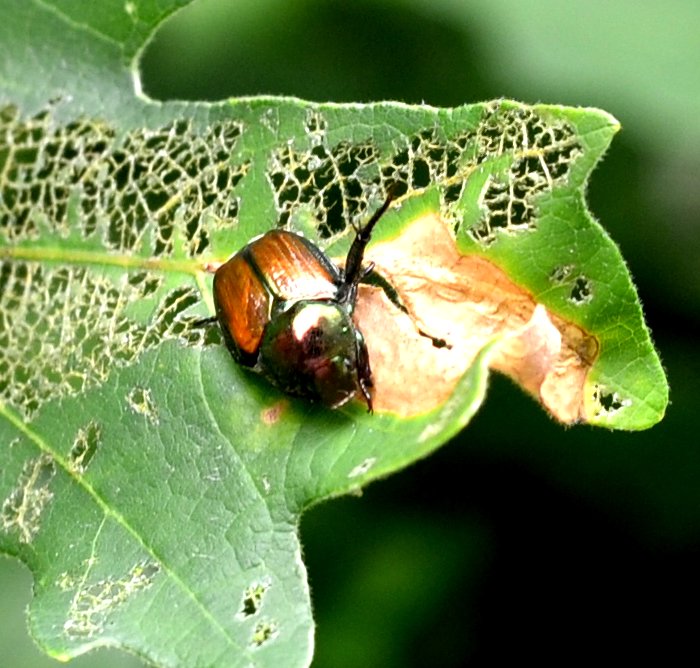

Too bad the red lily leaf beetles don't have a dedicated predator. They made quite a bit of havoc in the tiger lilies. Many of them couldn't support even one bloom. I've been picking the little critters by hand and killing them as I find them and am quick enough to grab them. The next beetle is obviously a long-horned one. Can you imagine such long antennae? Go Horns! I called the third one "olive" because at one point it looked like all those other olive mirror-like beetles. But the fourth is one we have seen before, maybe some kind of checkered beetle...
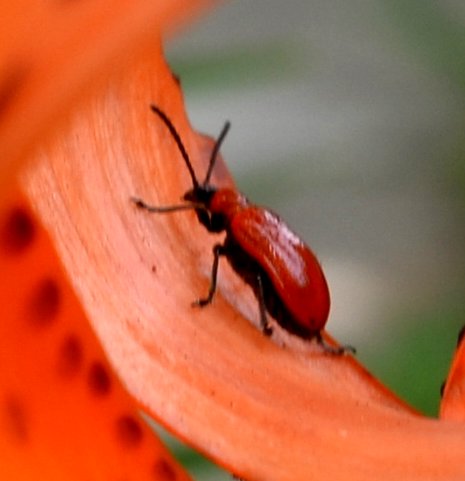
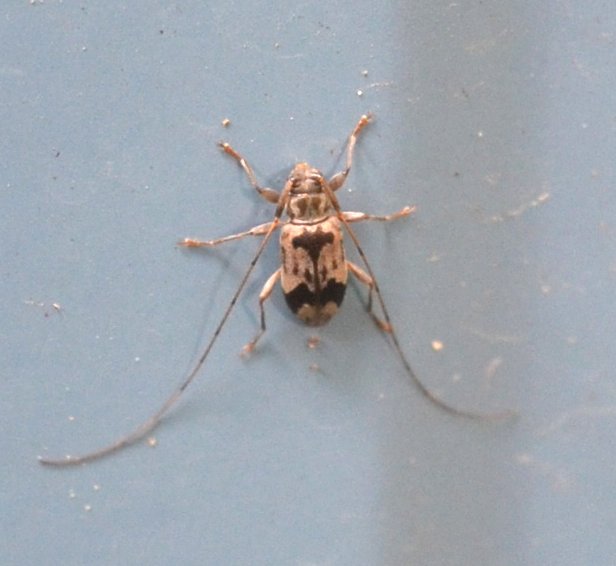
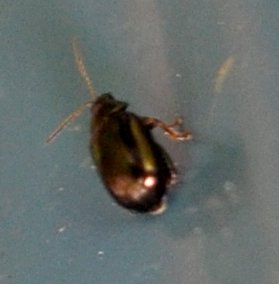

This first one was and is a mystery because that pesky leaf onbscures most of the beetle. The next one is a mystery because I'm slow at tracking a moving object. Third, a redbud bruchid, a weevil that feeds on the seeds of a redbud from inside the pod!

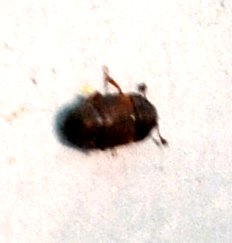

Here are three new weevils! I don't recognize any of them from prior experience.
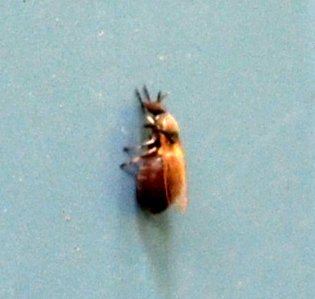
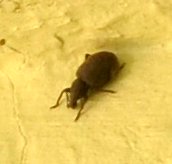
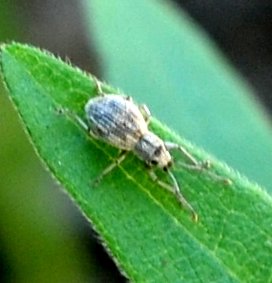
Good news! Do you remember last week's ambush bug nymph? Here it is and it was the 15th that I first saw it. Well, this very week there are adult ambush bugs. They come in two color combinations and I think I decided last year one was male and the other female! But take a look at that middle picture. There is a senator in the US who has deep furrows of seriousness or consternation, and who is often caricatured as a turtle. Look at the face on this bug, and even the posture, which does resemble a bent-over turtle.
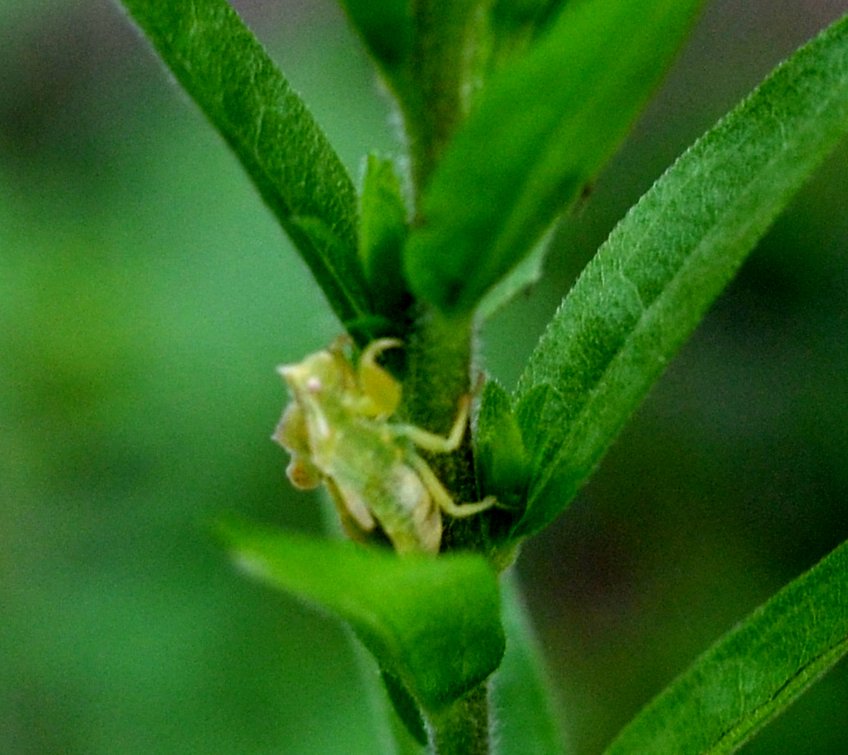
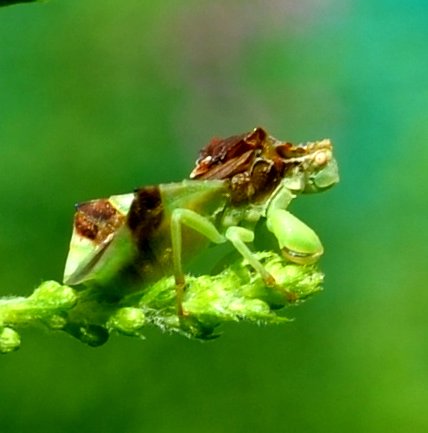
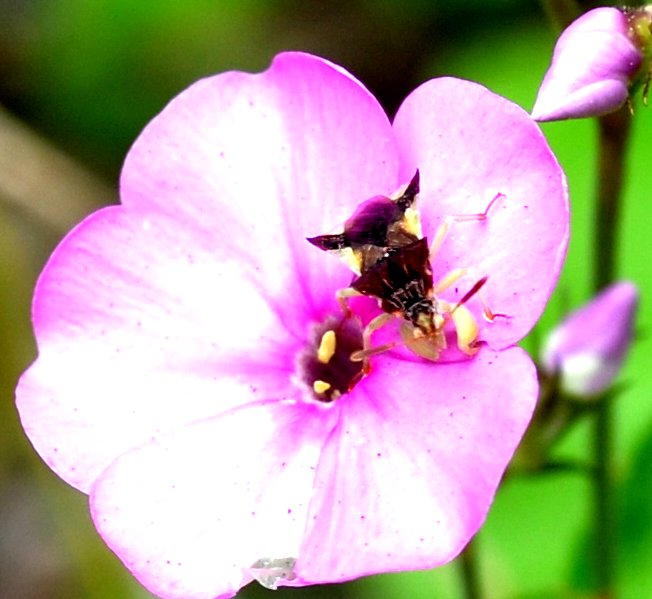
Let's take one flower break in the midst of the bugs. Here is that nonexistent Black-eyed Susan, which continues to defy the escargot. Then some miniature Astilbe passed on by Betty Beese, and some of the Japanese Anemone, which now has good strong buds.
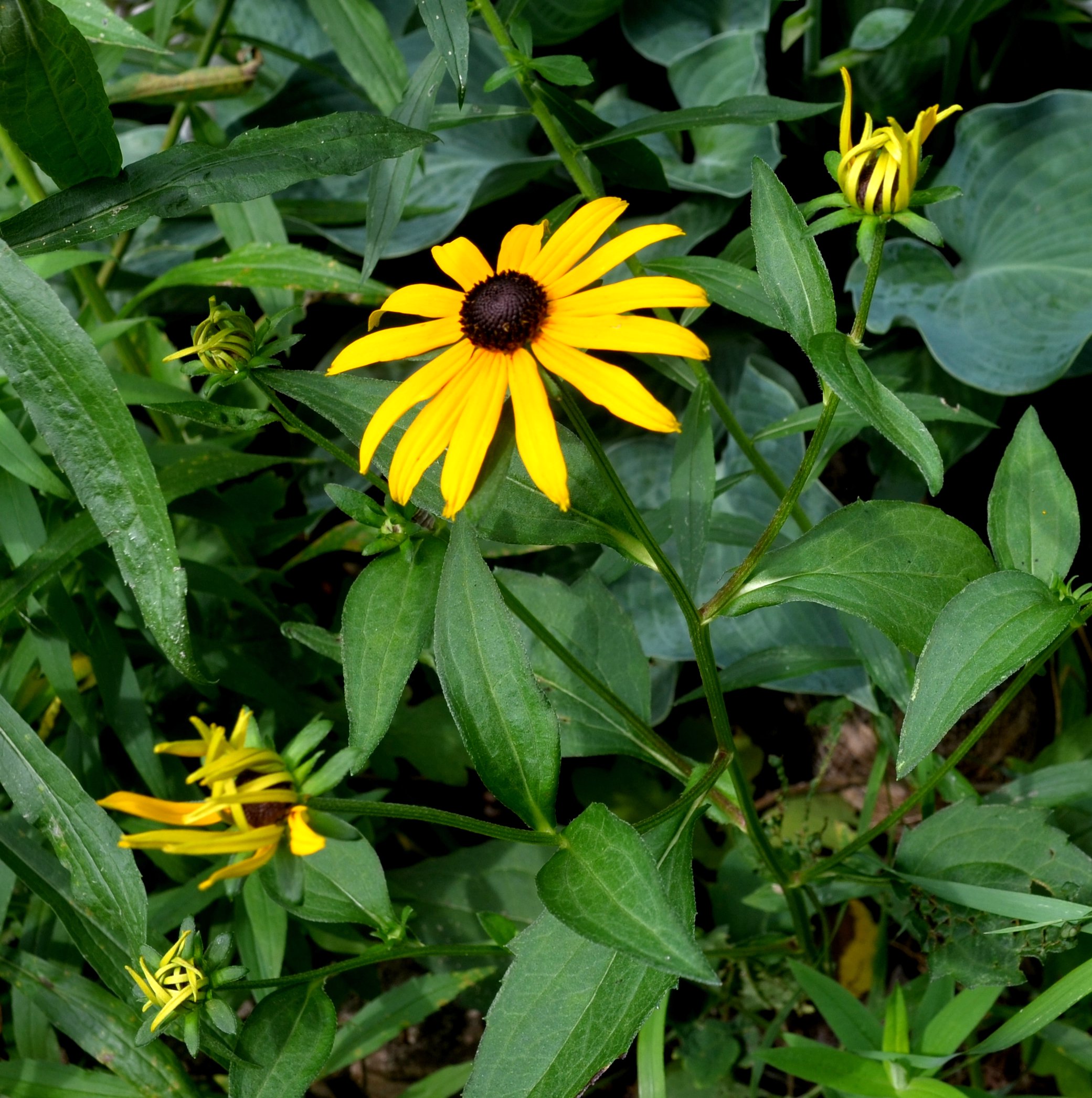
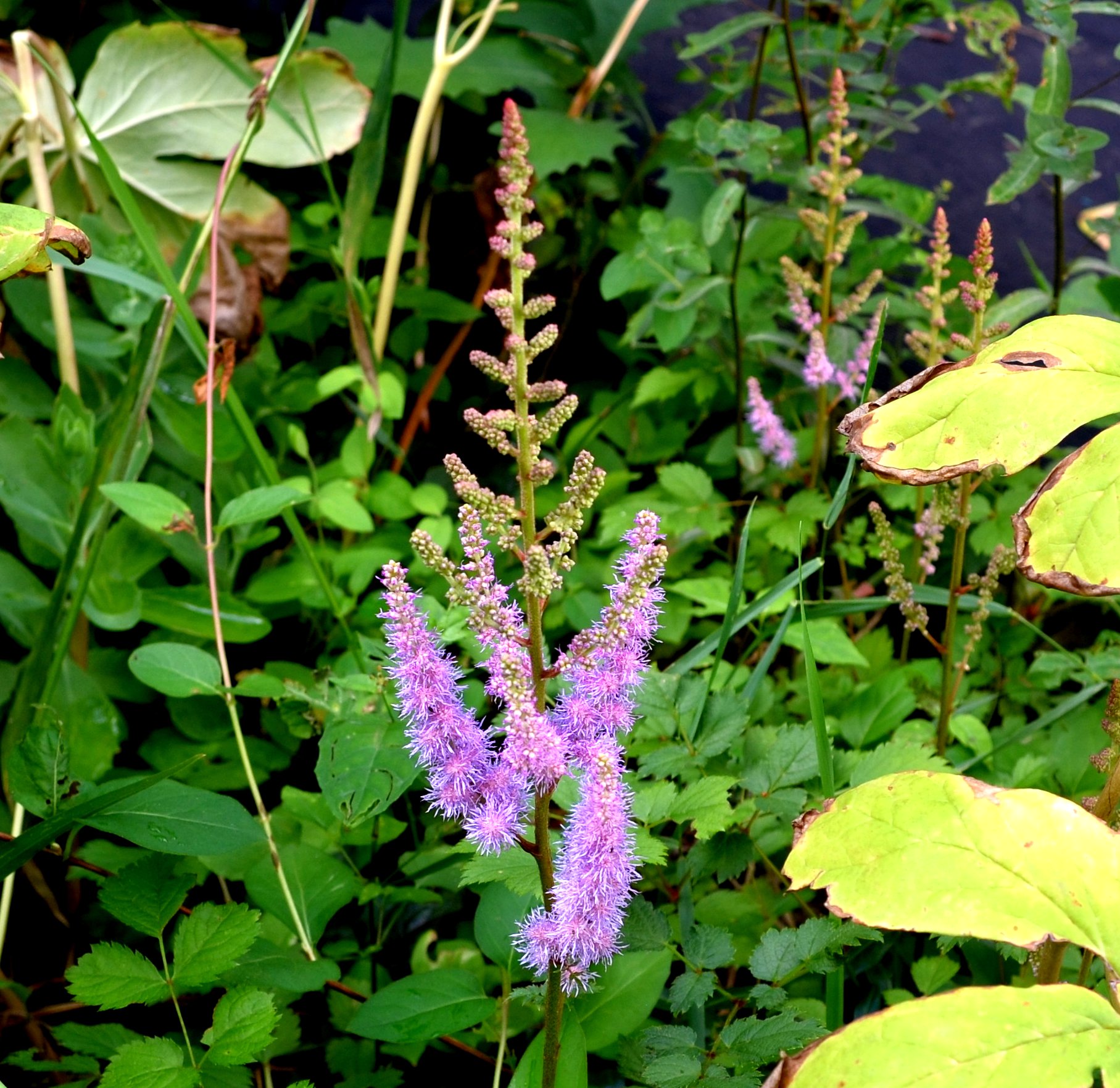

This is one of the assassin bugs, probably Zelus genus. See that long slurpy-maker? The next one looks like a leatherbug, but look how the dark sections seem to be cutouts in the bug's wings. Anyone who knows what it is, email me! I'll mention you. Here's a deserted cicada shell, of which I've spotted two lately.


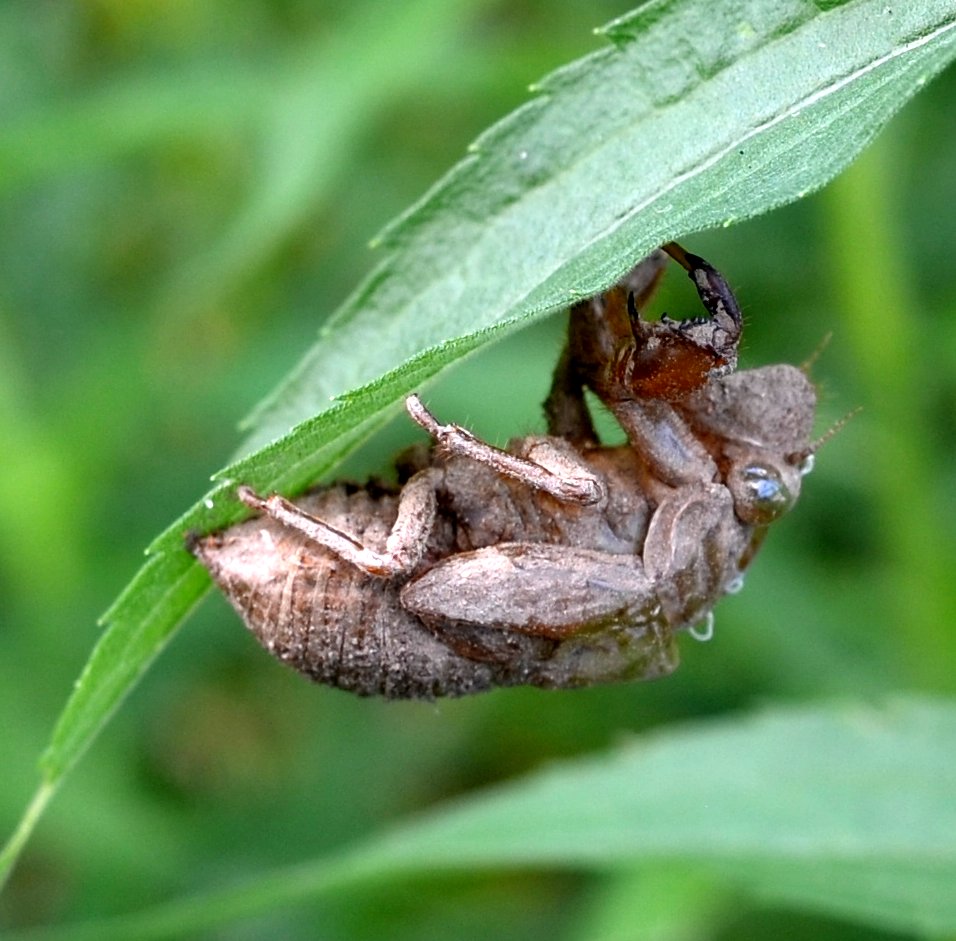
This one resembles a Lygus plant-bug, but different from the ones I've ever seen. And the second is a very long bug with very long legs, called a stilt bug.
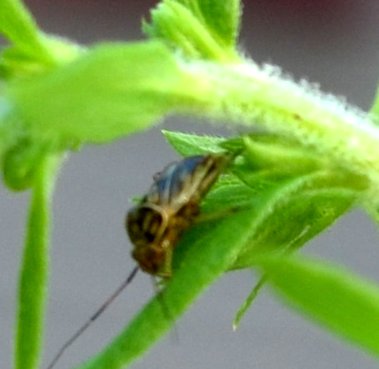
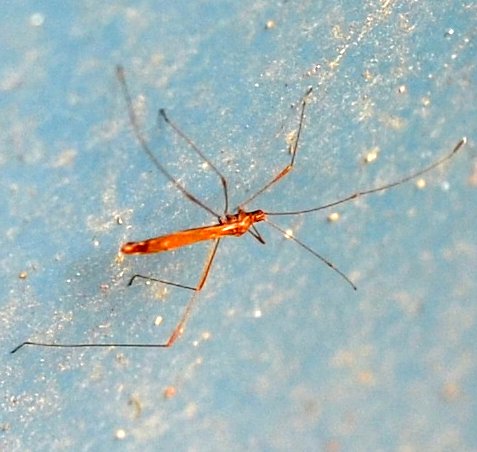
Everything buggy from here on out is going to be a hopper (tree, plant or leaf) or a spittlebug. That is, everything else in the bugs falls into the classification of "Free-living Hemipterans". First is my favorite nymph, that of the leafhopper Coelidia olitoria, of which I haven't seen any yet this summer. After a while they will be one of the most numerous leafhoppers. Second and third are what I saw immediately as a leafhopper, but after looking at the legs, I can't make out spikes at this resolution. Anyone have any ideas?
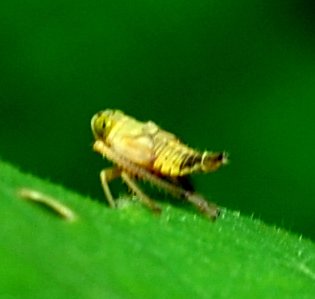

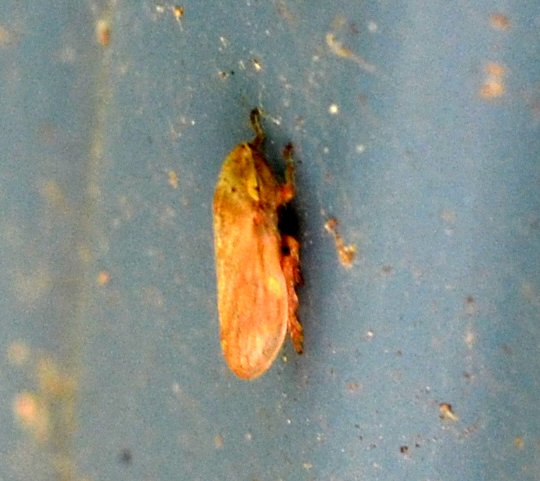
First is a new leafhopper. If you look at the back legs,they're spiky! Second is the lateral view. The third one
seems like a tattered leafhopper, but I believe from last year that this is the real look!
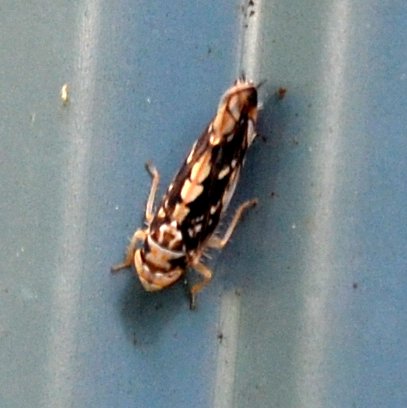
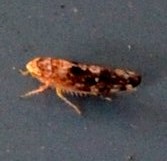
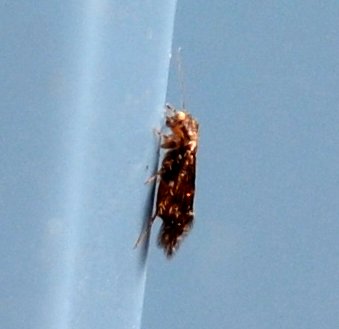
Much as I would have loved to call this first one a leafhopper, it has non-spiky legs, so it's probably a spittlebug. The second shot is of a Meadow Spittlebug; in fact it may be another sex from the first one. The third is the Northern Flatid Planthopper, which we saw last week too. And fourth is a little scene from the stem of a small thistle plant, with a treehopper, Entylia carinata and an ant which probably enjoys Entylia carinata and its "honeydew". In 2015, I had a huge colony of E. carinata and their ant tenders (not like chicken tenders) on an enormous Thistle. The more they bit into it, the larger it got. You can read about this
here. That page was p.7 of my May 19 2016 lecture Nature in the small about the various little ecosystems in my yard. To read the whole article, go here.
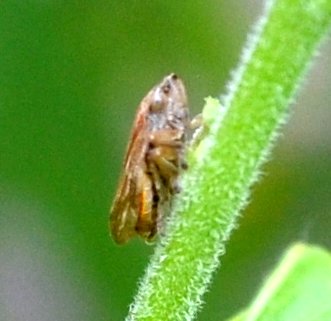
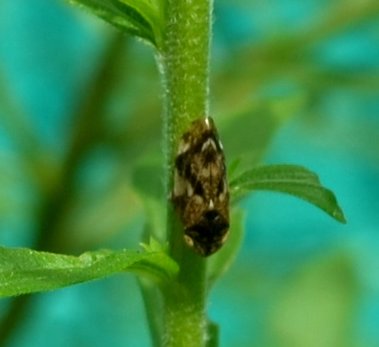
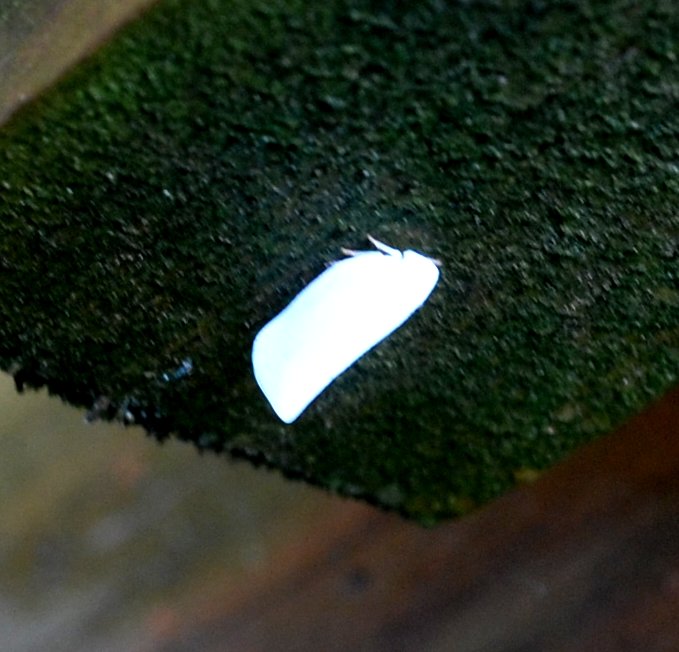
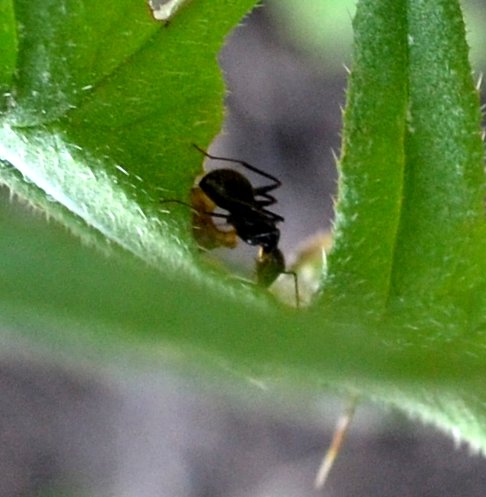
That about wraps up the bugs. We did have a very few different kinds of dragon/damsel flies. First is a Fragile Forktail, a male. One of the identifying characteristics of this damselfly is the sideways exclamation point near the head. Third is a nice european earwig.


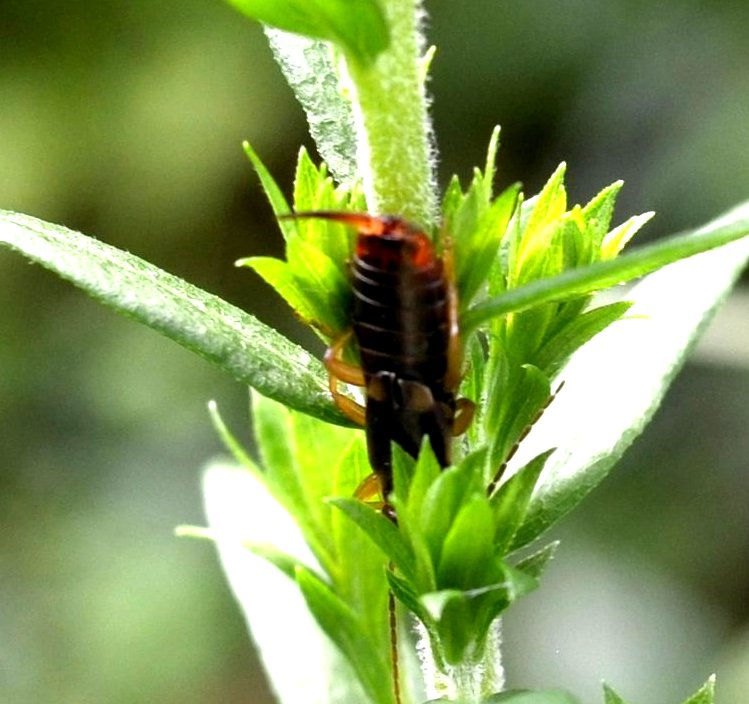
While you take a snooze, you might want a view of the fishes this summer. You can multiple-click on the picture and enlarge different views. You may see a tiny baby fish. There are two inch-longs, one grey and one multicolored. There are also some mysterious extra things in there (not all clutter from the tree above the pond), for example, just to the left of the little whitish fish and the red-and-black tortoiseshell. Beats me what it might be.
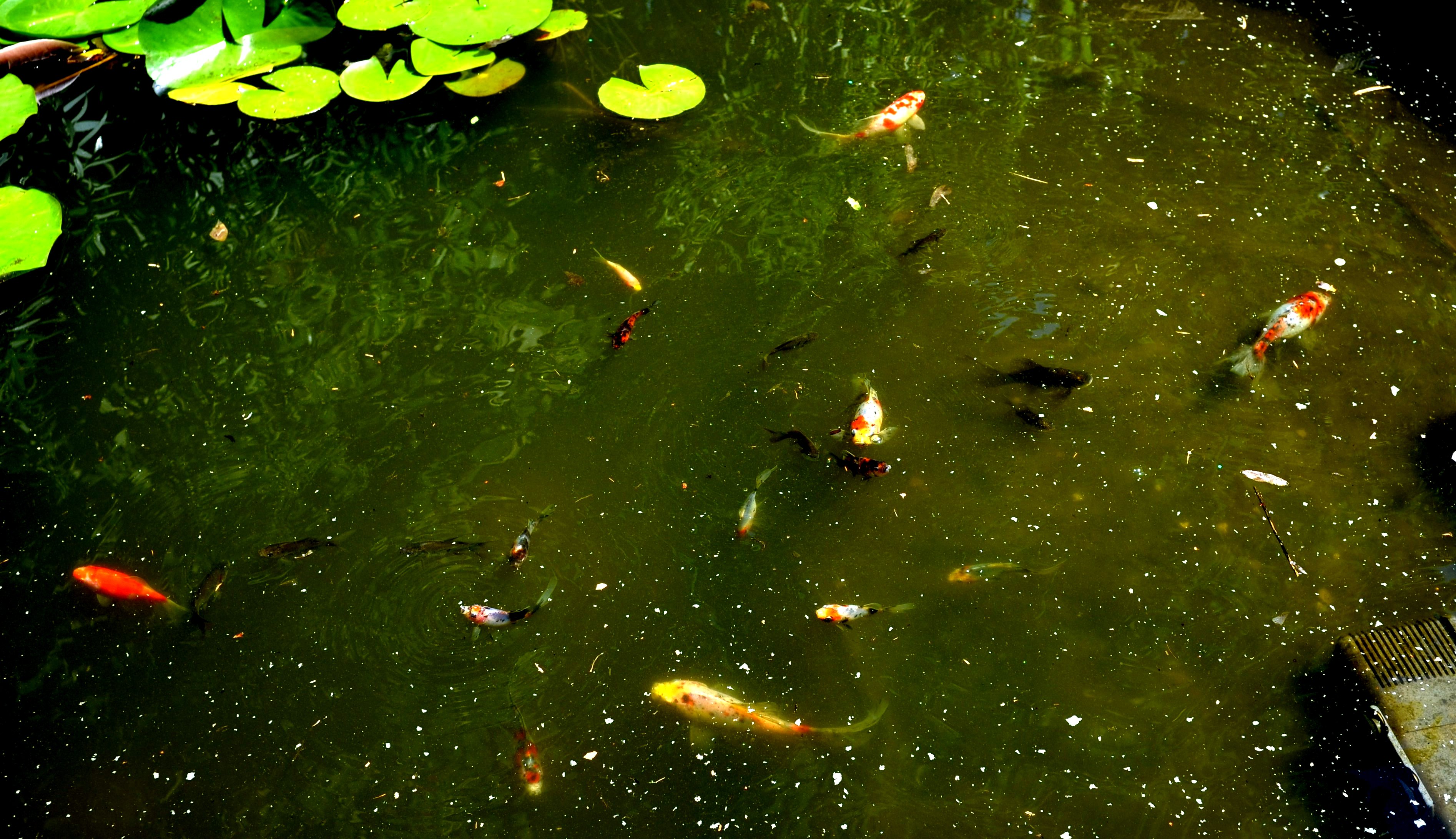
Well then, here come the flies. Would you believe the very first picture is of two small flies making whoopee? They might be hover flies, as is the second fly, but the wings (especially of #2) cover up the markings. The third and fourth are Toxomerus geminatus hover flies, the tiniest one I see around here.
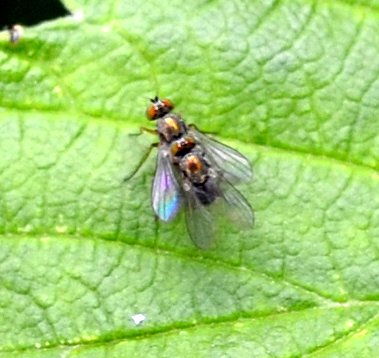
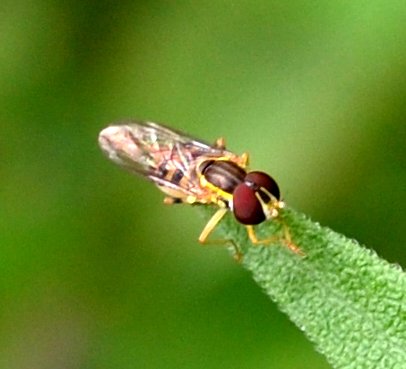

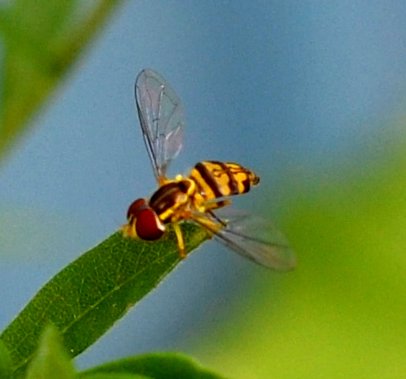
Here is the usual long-legged fly but with the nice dark-patterned wings. And a moth fly. And a fly with picture wings, taken in the wind - my excuse for this lousy shot.
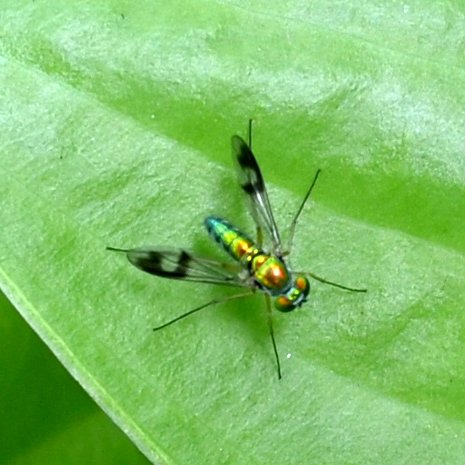
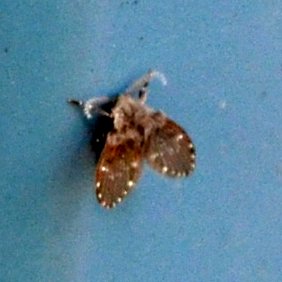
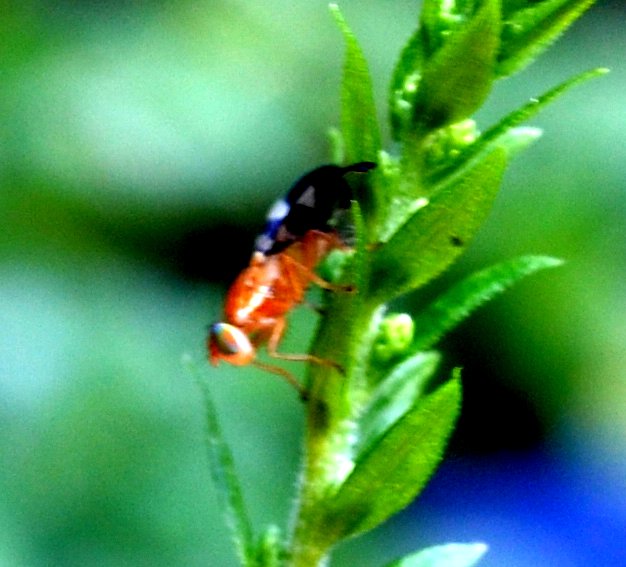
There was this little red and gold fly (two images), quite gorgeous colors; a smallish Sarcophage,and the ever-present root maggot fly...
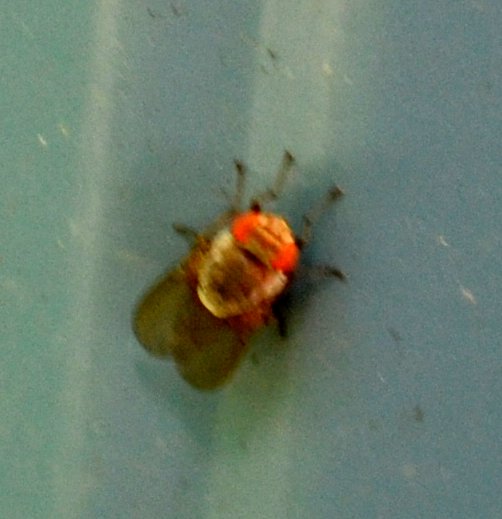
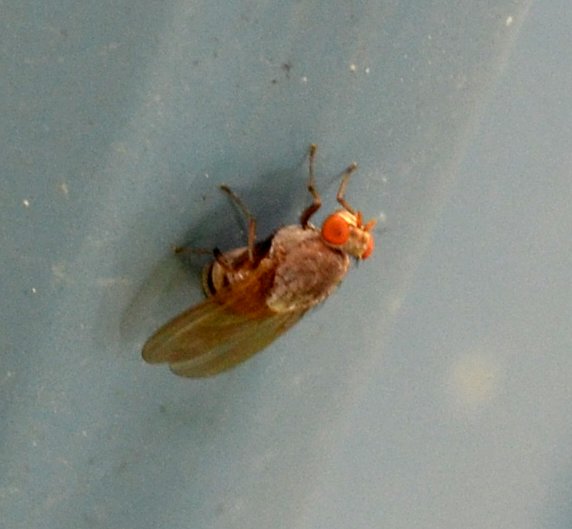
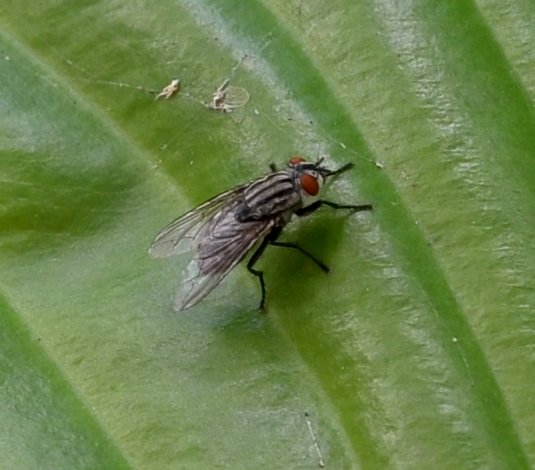
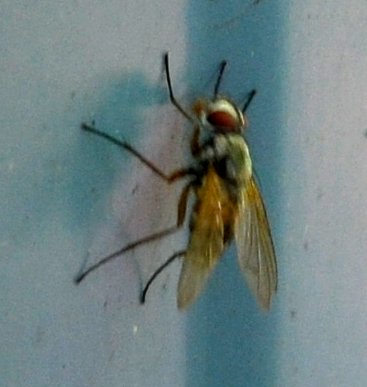
That's amazing. Don't we usually have more flies than that? Well, we do have some frogginess in here somewhere.
Here is that little green frog from last week - he or she has taken to hiding out from me. But I can see his/her lips from under that ledge in the pond. And the Seidls sidled over here with a little green grey tree frog. I really believe they come from the planet Vulcan. The ground is thick with tiny black American toads. As I saunter by, several will do their best leaping (about an inch high) and scrambling out of there. It was very strange. One day there were hundreds of tadpoles with little more than some back leg developments, and two days (thereabouts) later, you couldn't step near that place at the edge of the pond without shuffling loudly and talking loudly for tiny toads falling over themselves to avoid your big old shoes.
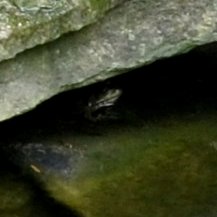
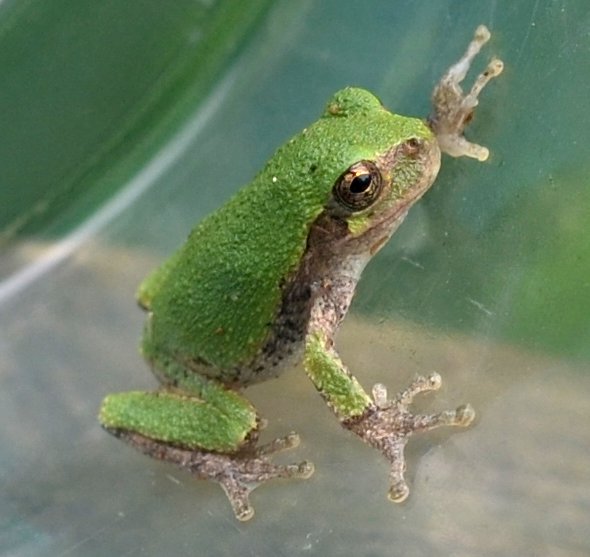
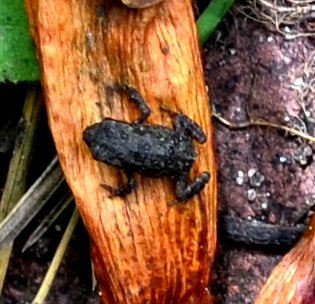
This looks like a good place to bring in a few more plants. The tiger lilies went by pretty fast, considering the long slow procedure towards blooming. Last year the tiger swallowtail butterflies came and stayed a half-hour to an hour sipping at every single orange throat. Today one flew right past the tiger lilies and couldn't find one that still had the good stuff. The hostas are flowering fast. Here is the largest-leafed hosta I have - Sun and Substance is a huge yellowish-green hosta and its flowers are the palest violet. Usually tiger swallowtails are fond of the bright pink phlox, which has been magnificent this summer, but since this one didn't stop to chat, I didn't get a shot of it. If you want to see some of the tiger on tiger action from last summer, goto the August 7 blog,or visit
here.
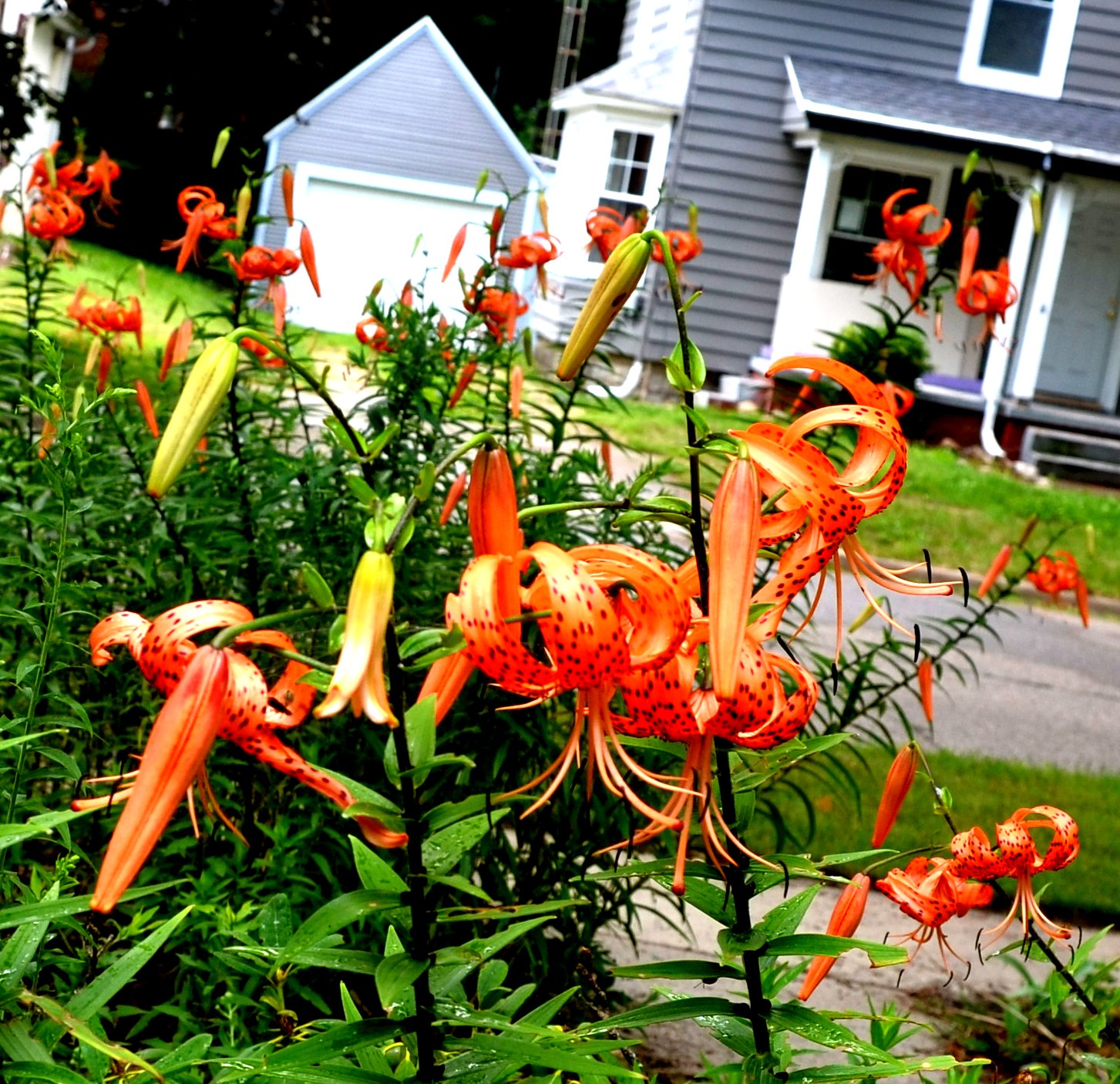
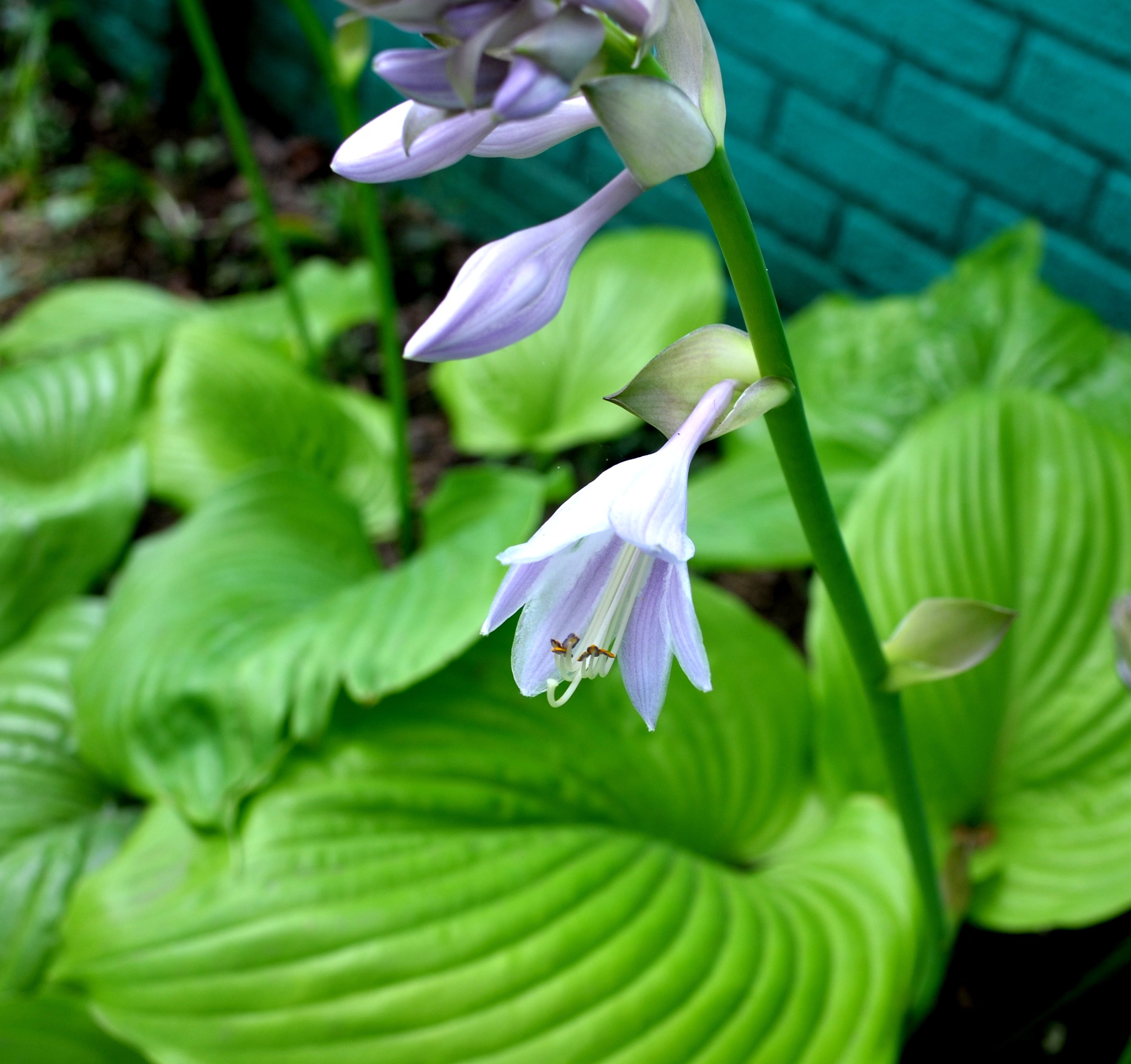
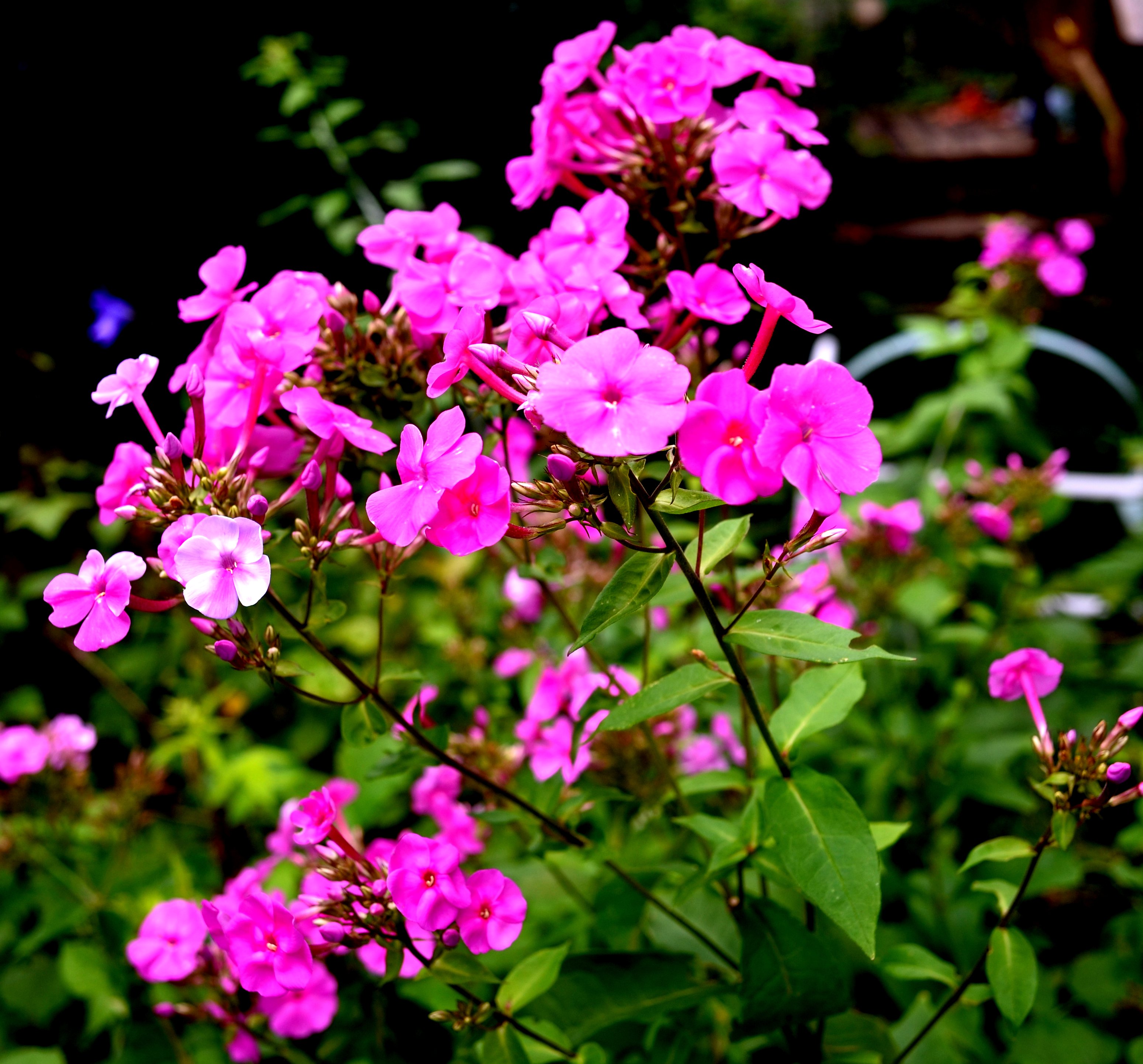
We had a few moths of various kinds. First, a kind of floppy one. The second one looked so much like a leafhopper, but then I flopped too and put it here with the moths. I have got to go back through my pictures - we might have had the third one last year. fourth is another floppy one. I don't know an alternative word for that. :-)
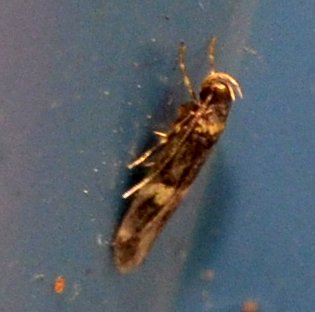
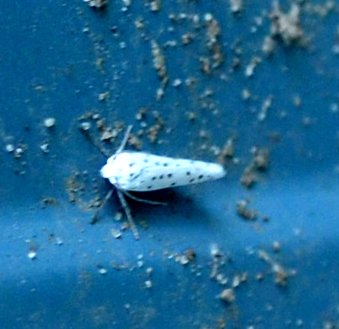
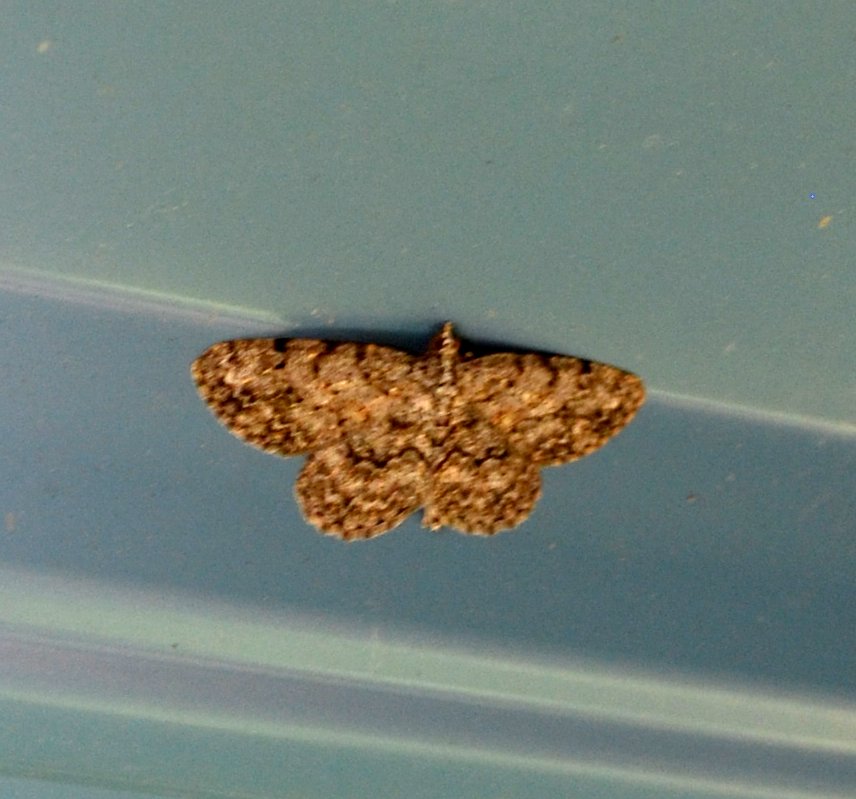
Another couple of moths, another floppy one. And last, one that almost fooled me into seeing it as a dead leaf, but then I looked very hard and saw a couple of tiny feet. It's called the Dark-spotted Palthis, don't you wonder what that refers to?
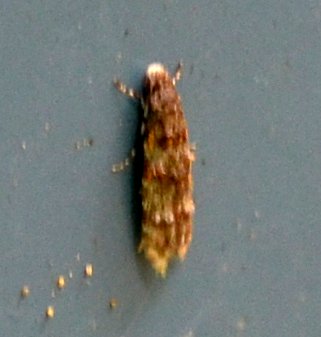
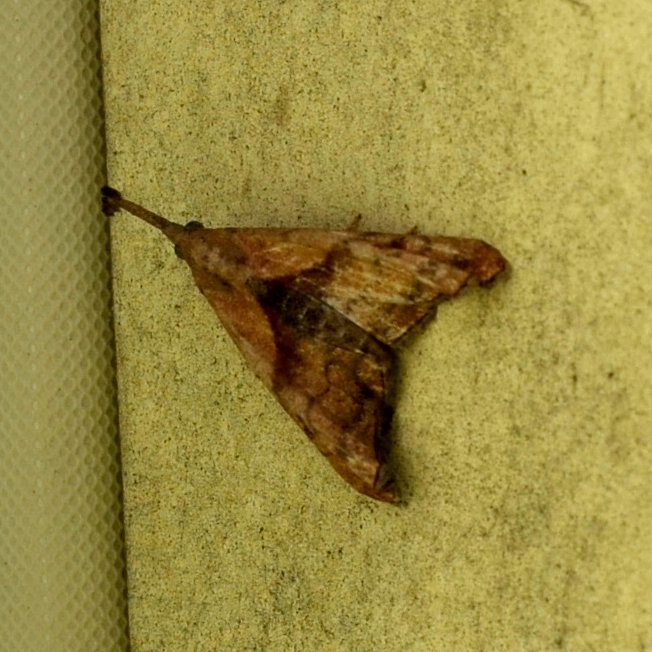
Remember the tiny little katydid nymphs? Here is a keepsake from June 19, where the colors are getting more distinct. Then, here is one from this week, a male. You'll see why in a moment. Look how long the wings are on this model. Then yesterday This was the scene behind my workshop in a shady part of the yard on an oak sapling, this one a female with a giant red scimitar for pushing her eggs into tight places, and with good-sized wings too.
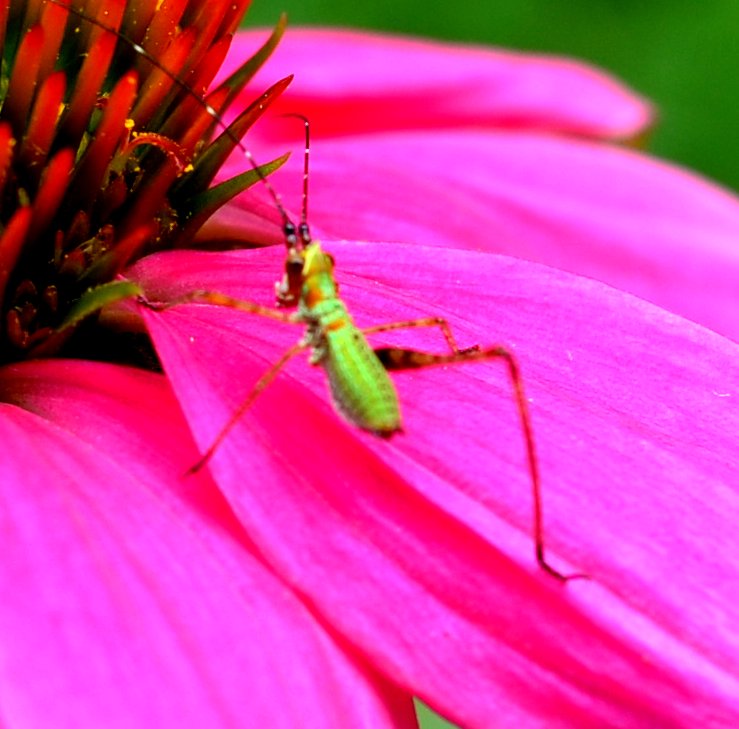
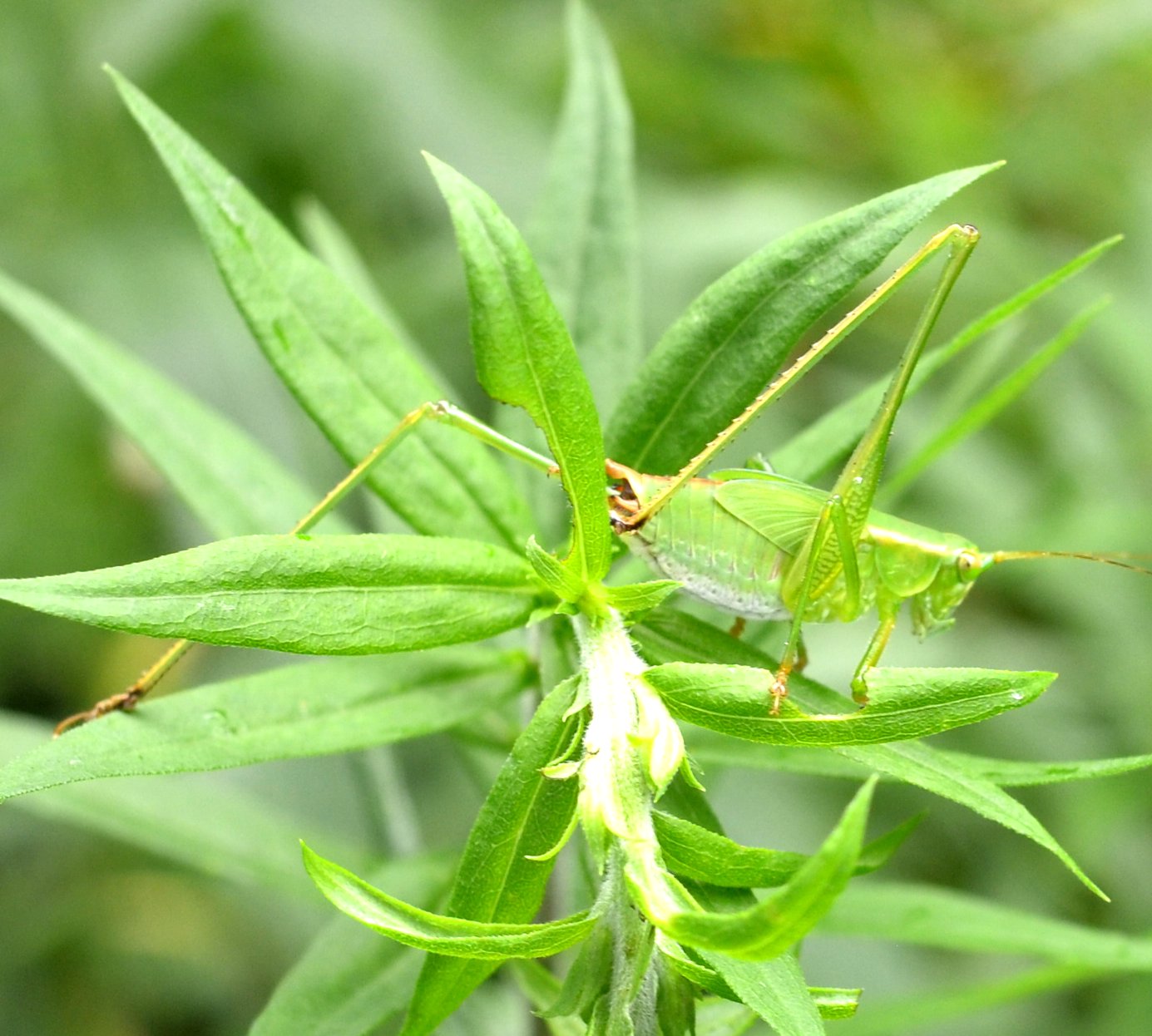
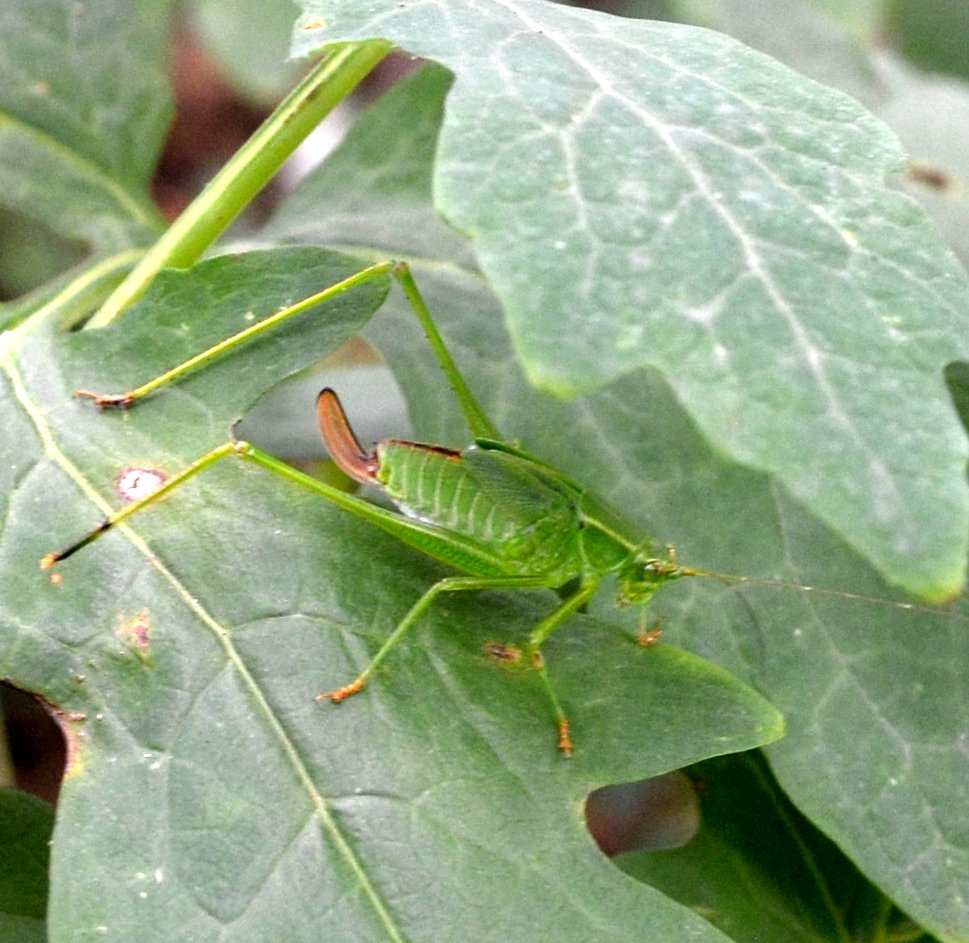
Spider time! Here is the black and white version of the common house spider, CHS. Then a ground crab spider, and a cross orbweaver.
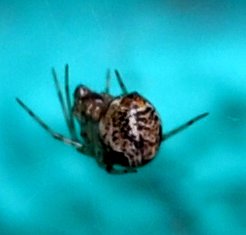
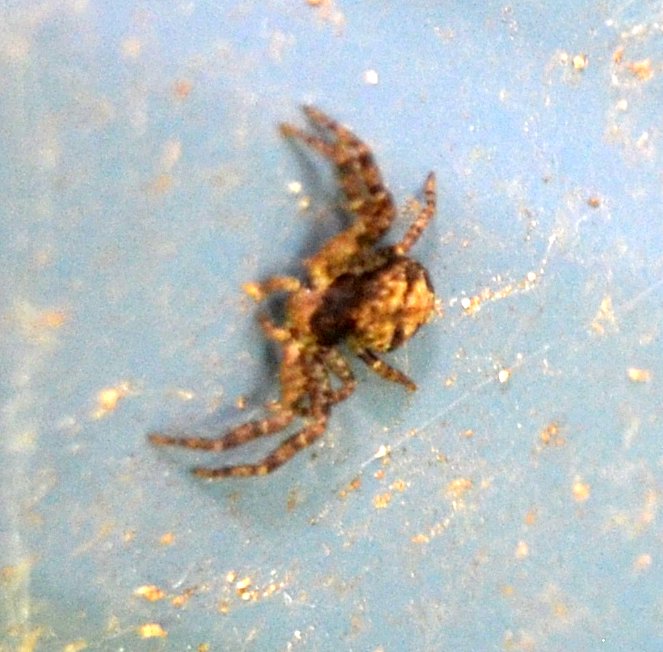
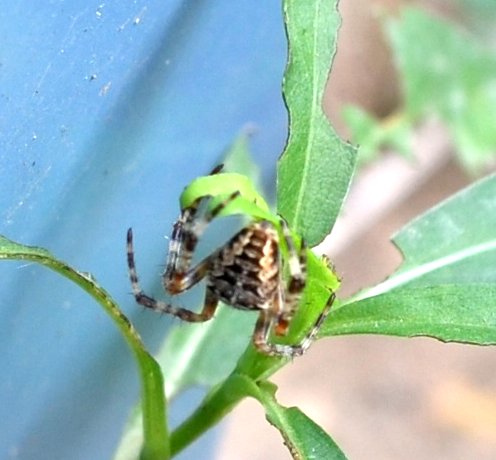
Here is Naphrys pulex, like the pregnant one that got so fat her pattern was distorted. This mystery spider may be one kind of cobweb spinner (example: CHS). And that faithful Orchard Orbweaver with all her wonderful colors.
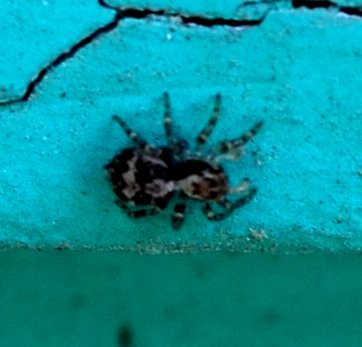

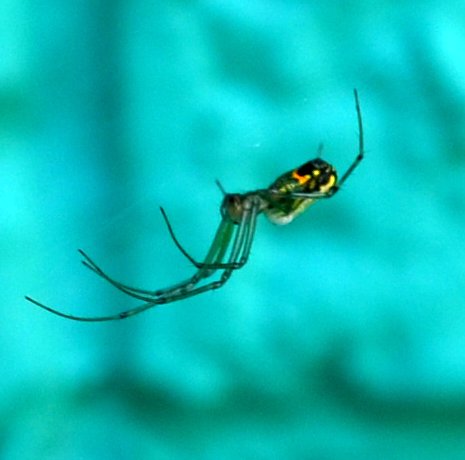
Are we down to the wasps already? It wasn't too bad a week for them. The ones that have worked over the tiger lilies collecting nectar are, interestly enough, one species, the Bee Wolf (which means it is a hunter of bees). I'm getting fair at spotting them. Their "skin" is rougher than most wasps,as you see in picture 1. They have distinctive markings on the back of the head (picture 2 from Sept 2016) . The third tipoff is their faces. The third picture is one I took of the face of a bee wolf last year (August 5, 2016). I didn't get a picture of the face this year, but it looked like the one I took last year. It's a pretty definitive face, not everyone gets one like it.

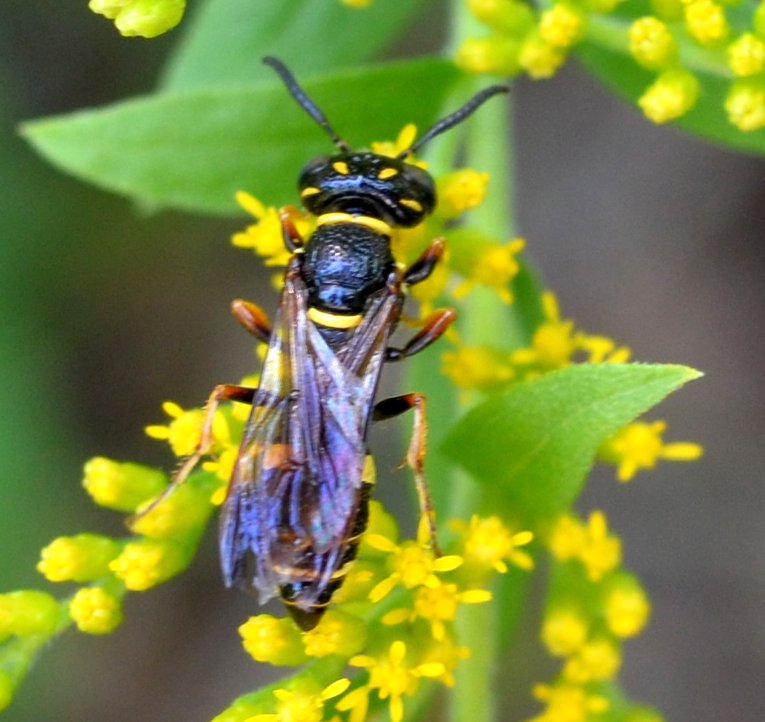

Another true wasp is the European paper wasp. Here is a male who has had his wings mutilated. In the second picture, this male seems to have huge intelligent eyes. I don't know if all the black is indeed eye. But still he presents a nicer picture than the wounded one. I hope it is true that they don't feel pain, but maybe the wings themselves don't have nerves if any part of them does.
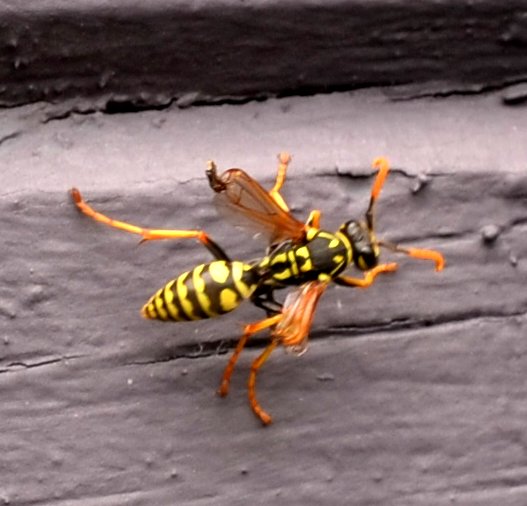
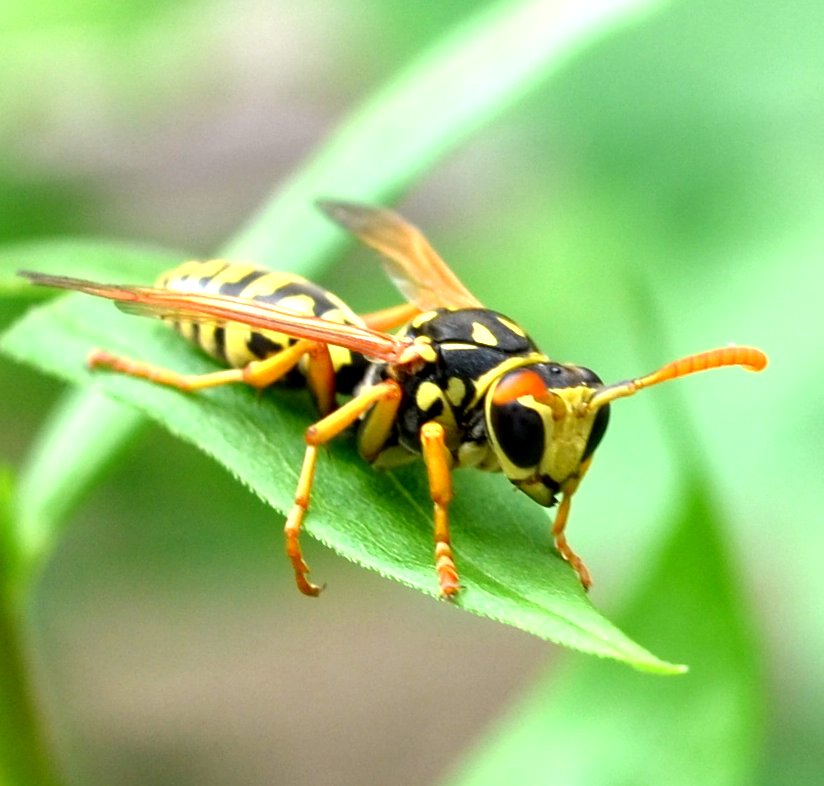
We had quite a few ichneumon wasps. The female ones are easier to recognize because of their ovipositors. I liked this red one with variegated antennae a lot. The second one is quite different even with the same basic red and black colors. This colorful third individual is drinking from a water drop on one of the hostas.
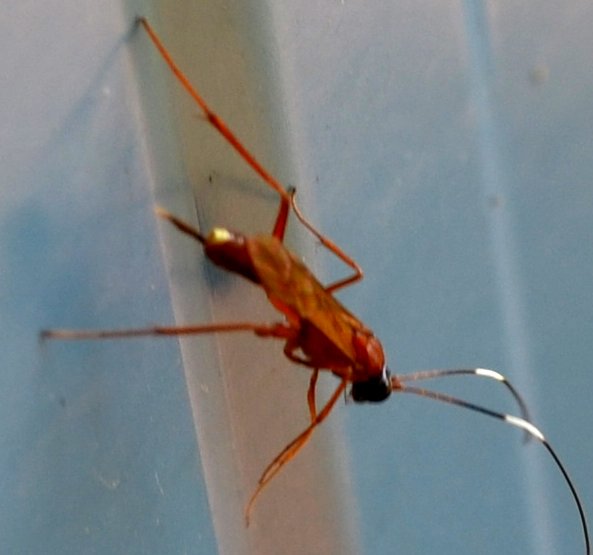
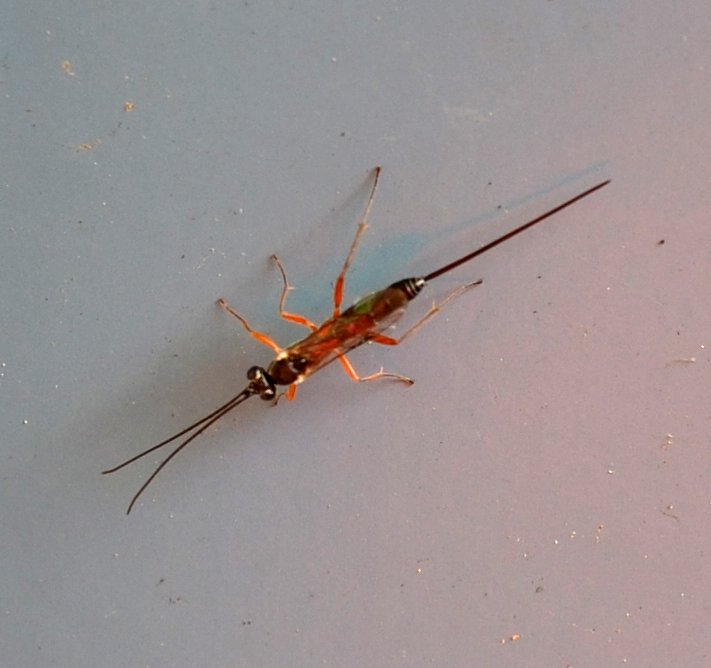
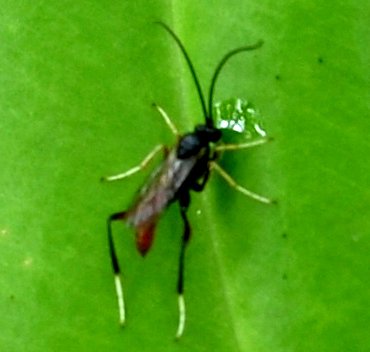
A few more dashes of color! The nightshade has such tiny delicate purple blossoms, quite fairy-like. Do you remember the books of Flower Fairies by Cicely Mary Barker? Apparently they are out again in one book containing the 8 original little books. The hibiscus blossom begins opening in the morning and by noon is fully bloomed out. Here it is in early opening. This blue hosta has purplish-white flowers - this cluster is just about to bloom - you can see the yellow pollen stems inside the leaves.
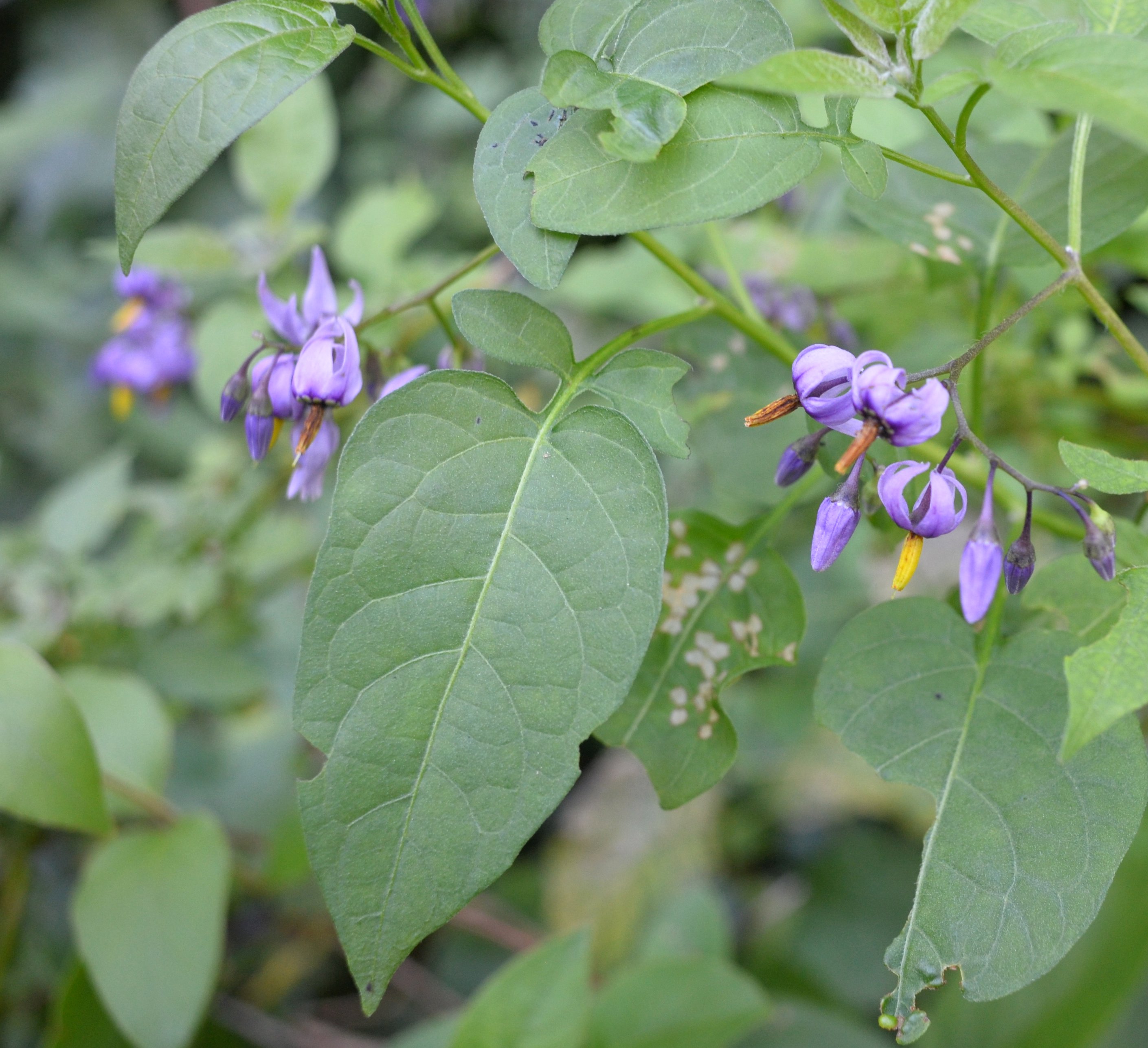
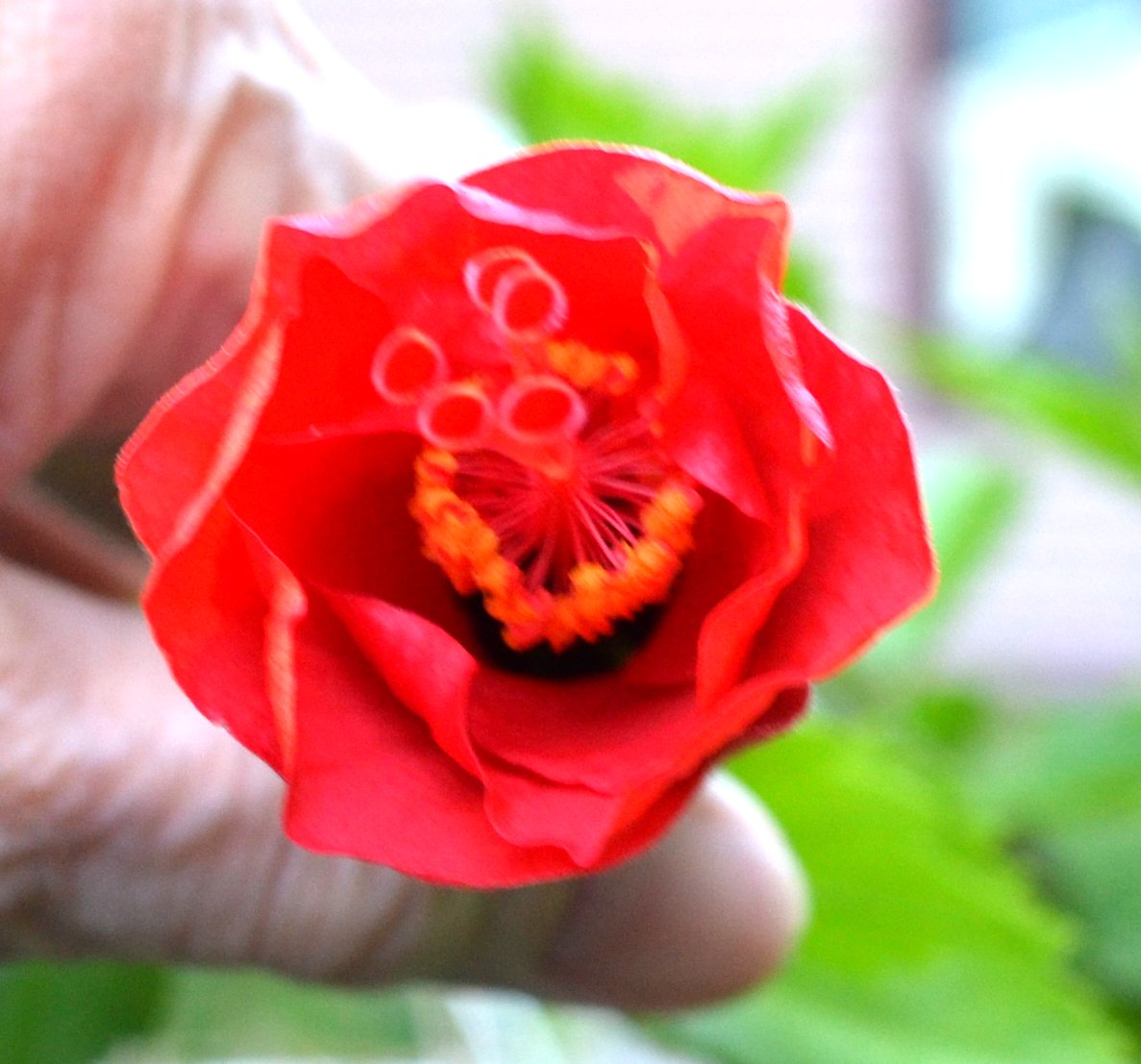
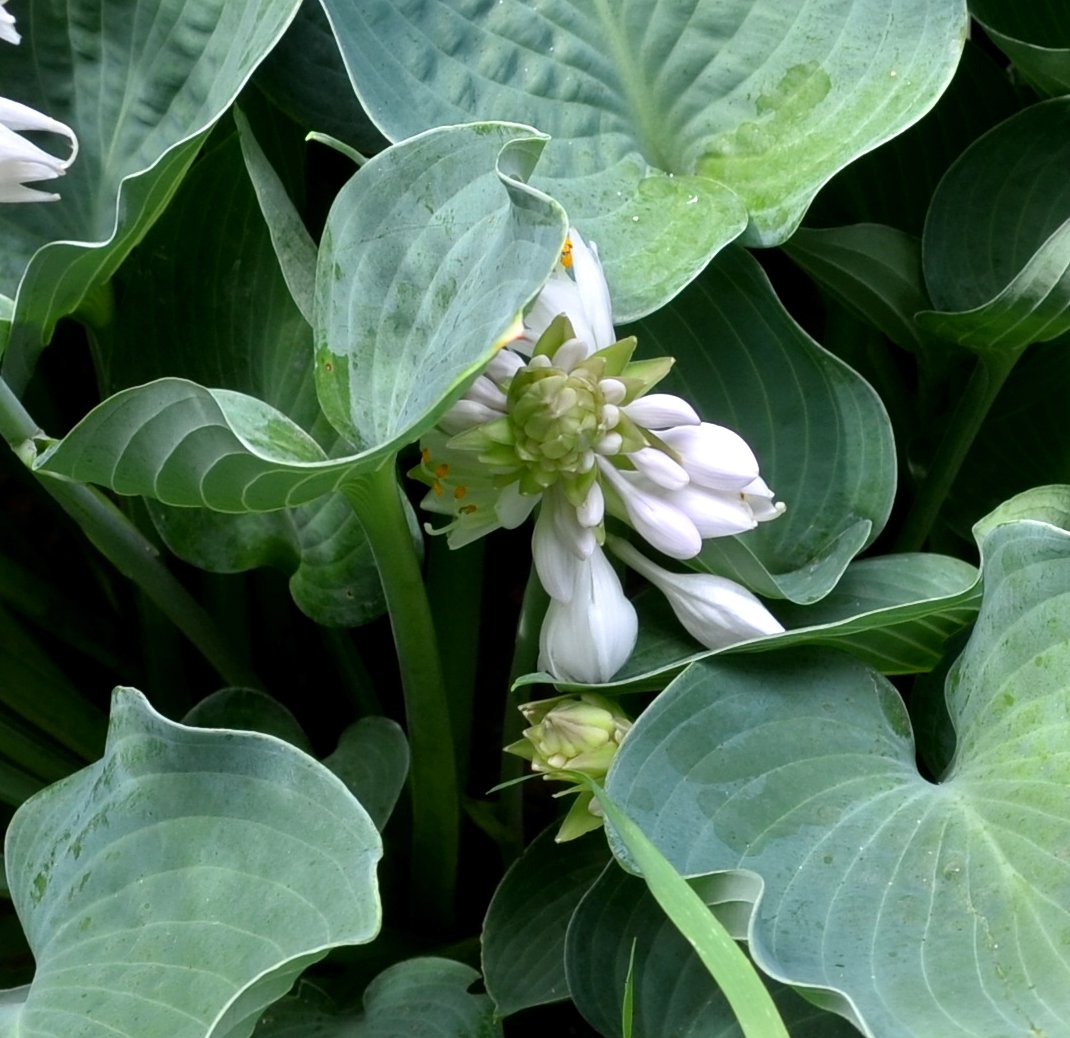
If only people were as reasonable as flowers and wasps, it would probably be duller than a doorknob. But it is so calming to just walk outside and see some of the wonderful things going on silently and explosively at the same time. If that makes any sense at all, please come back next week!
Love, Martha
Back to July 23, 2017
Forward to August 6, 2017
Back to 2017 menu
Back to main menu
copyright Martha O'Kennon 2017

















































































